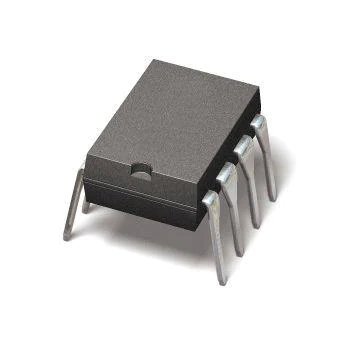EPC1PC8
Part Number: EPC1PC8
Manufacturer: Intel / Altera
Description: FPGA – Configuration Memory IC – Ser. Config Mem Flash 1Mb 8 MHz
Shipped from: Shenzhen/HK Warehouse
Stock Available: Check with us
ICRFQ.com - Electronic Components Distributor in China Since 2003

Part Number: EPC1PC8
Manufacturer: Intel / Altera
Description: FPGA – Configuration Memory IC – Ser. Config Mem Flash 1Mb 8 MHz
Shipped from: Shenzhen/HK Warehouse
Stock Available: Check with us
| Datasheet | |
|---|---|
| Category | Integrated Circuits (ICs) |
| Family | Memory – Configuration Proms for FPGAs |
| Manufacturer | Altera |
| Series | EPC |
| Packaging | Tube |
| Part Status | Active |
| Programmable Type | OTP |
| Memory Size | 1Mb |
| Voltage – Supply | 3 V ~ 3.6 V, 4.75 V ~ 5.25 V |
| Operating Temperature | 0°C ~ 70°C |
| Package / Case | 8-DIP (0.300″, 7.62mm) |
| Supplier Device Package | 8-PDIP |
The third generation of Altera’s MAX architecture forms the foundation for the MAX 9000 EPC1PC8 family of in-system-programmable, high-density, high-performance EPLDs. The EEPROM-based MAX 9000 series EPC1PC8 is fabricated using cutting-edge CMOS technology. It offers between 6,000 and 12,000 useable gates, pin-to-pin delays as short as 10 nanoseconds, and counter rates reaching up to 144 MHz.
An electrically programmable logic device, also known as an EPLD, is a form of programmable logic device (PLD) that has an array of programmable logic devices that are not coupled to one another at first. Electrical configuration or programming of this sort of PLD’s array of logic devices must be carried out by the device’s user. PLDs are used in the construction of reconfigurable devices, which can be set to several different uses depending on the applications that are programmed into them.
When they are produced, electrically programmable logic devices perform a purpose that has not yet been determined. In contrast to this, logic gates already have a predetermined set of functions that they can do.
A programmable logic device, also known as a PLD, is a piece of semiconductor equipment that may be reprogrammed in order to acquire the needed logic devices. This piece of equipment is also commonly referred to as a PLD. In many semi-custom applications, special-purpose logic devices, including logic gates, flip flops, counters, and multiplexers, have been replaced by programmable logic devices (PLDs), which can be reprogrammed. PLDs are also known as reprogrammable logic devices. It is made up of a string of AND gates and OR gates, each of which is capable of being individually programmed to perform the required logical operation. The advantages and disadvantages of PLD are discussed in the next portion of this article to provide the reader with a more in-depth understanding of the subject matter.
The ELD automatically records the following information to maintain records of duty status, assist drivers in monitoring their driving limitations, and avoid problems caused by fatigue:
The FMCSA does not guarantee any device that is registered in accordance with the ELD regulations. To comply with the rules, the provider or maker of electronic log devices (ELD) must certify and register the devices. This practice is commonly referred to as “self-certification.” It suggests that ELD providers are responsible for ensuring that the ELD solution meets the technological standards listed in the ELD rule they offer to their customers.
ELDs will assist you in remaining in compliance with the rules. Their primary purpose is to increase overall road safety while reducing the likelihood of drivers falling asleep behind the wheel. They help the trucking sector in various ways, including reducing the time and money spent on paper logs, improving the effectiveness of record-keeping and inspections, and, most crucially, avoiding accidents and preserving people’s lives.
Develop your strategy, make sure your ELD administrators are up to date, and teach your drivers as quickly as possible to ensure a smooth transition to full compliance. These indicators contribute to your fleet’s safety level, compliance status, and CSA scores.
Thanks for reading. If you like this article, please explore the rest of our website for more great content like this one and learn more. If you have any questions about this article, please leave them in the comment section below, and we will do our best to respond to them.
If you need information or want to order EPC1PC8, then contact us here at ICRFQ, your leading electronic components in china, and we will ensure you get the best product at the best price.
WhatsApp us